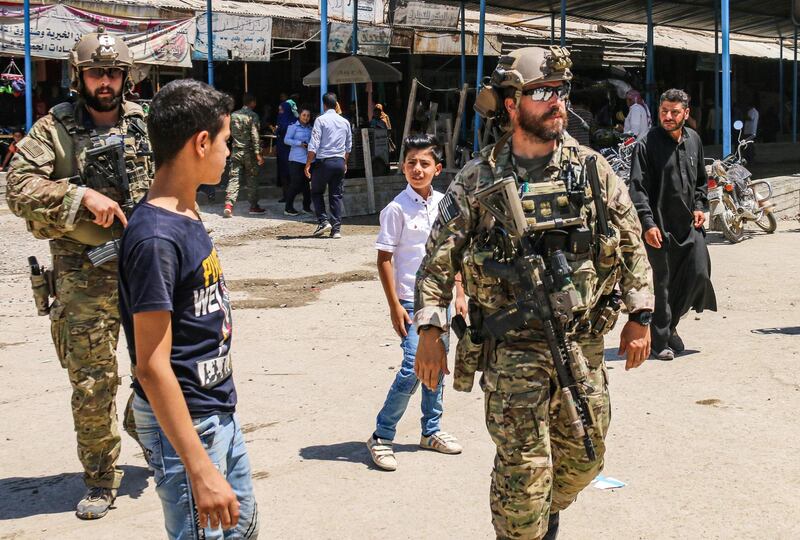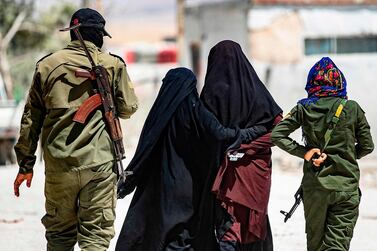The lack of an integrated strategy has left Washington vulnerable in Syria, giving strength to the foes it sought to contain and leaving it without a long-term ally in the country.
A report by the Pentagon on Tuesday said ISIS has “solidified its insurgent capabilities in Iraq and was resurging in Syria” during the past four months.
The report reflects the limits of a narrowly defined US military intervention that ended up supporting a land grab by a Kurdish militia of border areas in eastern Syria.
The takeover infuriated Turkey and many Arab inhabitants of the region, opening a venue for ISIS recruitment and raising local support for Ankara.
Turkey regards the militia, called the People's Protection Units or YPG, a subsidiary of the banned Kurdistan Workers’ Party, otherwise known as the PKK.
Before the 2011 uprising, the Kurds comprised about 10 per cent of Syria’s 22 million population, but were a majority in certain parts of the east.
The US strategy ignored President Bashar Al Assad’s scorched earth and siege warfare on his own population and the spread of Iran's proxies supervised by its Islamic Revolutionary Guard Corps.
Those proxies are posted across Syria, from areas bordering Iraq in the east to the Hauran plain, across from Israeli forces, in the south.
They could pose a threat to US troops if hostilities broke out in the Gulf.
The Syrian opposition says Iran’s role helps ISIS in its efforts to recruit disenfranchised Sunnis.
The US intervened in Syria in 2014, stationing troops in the east and developing Kurdish forces to defeat ISIS.
The intervention also ensured that Syria would not fall wholly to Russia, which intervened to prop up Mr Al Assad’s regime in late 2015, and to Iran.
Eastern Syria accounts for most of the county’s oil production capacity and wheat farming in an area between the Euphrates and Tigris, the once great rivers that crossed much of the ancient world.
In December 2018, President Donald Trump announced the US withdrawal, saying the mission achieved its aim of defeating ISIS.
The withdrawal was supposed to be immediate, but an estimated 1,000 specialist troops remained in eastern Syria, about half the number before the announcement.
The withdrawal has forced the US to negotiate with Turkey on a safe zone in eastern Syria. Ankara wants take away territory from Washington’s Kurdish allies.
The US risks leaving what is left of the region, which amounts to a third of Syria’s landmass, to its remaining three rivals – Russia, Iran and the Syrian regime.
America’s Kurdish proxies have had a mostly cosy relationship with the Assad regime since 2011.
But with the US winding down its military involvement, a Kurdish source working with militias in the city of Qamishli said most of the population in the east fears a return of Mr Al Assad’s rule and resumption of his regime’s repression of Kurds.
“The YPG are practical and can find an accommodation with Assad that suits them as a group, but the Kurds as a population stand as the biggest loser if the Assad regime returns,” the source said.
“The Arabs of eastern Syria have also lots of scores to settle with the Kurds, and Assad as well as Turkey have no problem in allowing that.”
In the past 35 years, eastern Syria has developed into a powder keg after forced population transfers of Arabs into the mixed province of Hasakah, and Kurdish disenfranchisement under the rule of Hafez Al Assad, despite his support for the PKK.
The late president deliberately diminished tribal structures and social cohesion.
PKK affiliates supported his son’s crackdown on the Syrian uprising in 2011 and a brief Turkish-backed campaign by anti-Assad rebels in 2012 to contain the Kurdish militias failed.
Whoever ends up controlling the large, strategic region, the US has ensured that it will be having little say.







